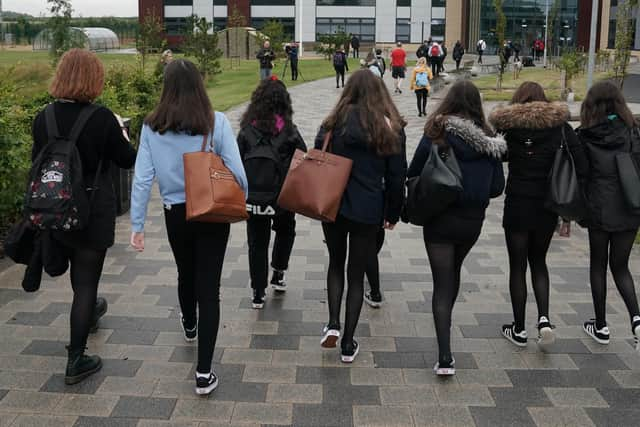Sexual harassment: Two-thirds of Scottish pupils have been sexually harassed at school, new study shows
In total, 65 per cent of 13 to 17-year-olds surveyed reported experiencing some form of visual or verbal sexual harassment, such as sexual jokes, while 34 per cent said they had experienced personally-invasive behaviour such as sexual touching.
The study, led by the University of Glasgow, surveyed 638 pupils and identified a “gateway effect”, where personally-invasive behaviours involving contact were almost always reported by those also reporting more visual and verbal harassment.
Advertisement
Hide AdAdvertisement
Hide AdAbout a quarter had been shown unwanted sexual messages or images (26 per cent) and about a fifth (17 per cent) had been described as gay or lesbian in a hurtful way.
Some participants said they felt unsure about whether they had experienced certain behaviours, while a “strong association” was identified between being a victim and a perpetrator of sexual harassment. A fifth of those reporting they had been a victim of personally-invasive harassment – such as unwanted touching – said they had also been a perpetrator of it (19.5 per cent).
The study was conducted between June and November 2019 and asked pupils to consider the three months prior when answering.
Students were interviewed from three schools from different parts of Scotland to complete the survey. The schools were not identified for confidentiality reasons.


Lead author Kirstin Mitchell, professor of social science and public health at the University of Glasgow’s MRC/CSO Social and Public Health Sciences Unit, said: “Sexual harassment is common and often seen as normal among teenagers at school.
“Our study agrees with others in this respect, but, importantly, also highlights the uncertainties which teenagers may feel around whether many behaviours generally regarded as representing sexual harassment are acceptable or not.
“These results have implications for the design of school-based sexual harassment interventions which, if effective, could generate long-lasting changes in attitudes and behaviours.”
Prof Mitchell said the study was created to understand the scale of sexual harassment in schools.
Advertisement
Hide AdAdvertisement
Hide AdKathryn Dawson, from Rape Crisis Scotland, said: “We’re sadly not surprised that the research found so many young people had experienced sexual harassment, and that girls and LGBT students were most likely to have experienced certain forms of it.
"Rape Crisis centres across Scotland are working with their local schools to deliver workshops on sexual harassment, healthy sexual relationships and consent so that young people have a space to talk about these issues.
"Although they are not always sure what counts as sexual harassment to start with, the research showed that when they have the opportunity to talk about it, young people are able to draw out the importance of issues like consent and pressure, and through this gain a clearer understanding of what is OK and not OK.”
Ms Dawson said schools were increasingly aware of the prevalence of sexual harassment and while many were taking action, all of them must treat it as a priority issue.
Education secretary Shirley-Anne Somerville said there was no place for harassment in any sector of society, adding she is determined to ensure children receive high-quality education around relationships, sexual health and parenthood.
She said the Scottish Government was committed to developing national guidance for schools to help tackle sexual harassment and gender-based violence.
